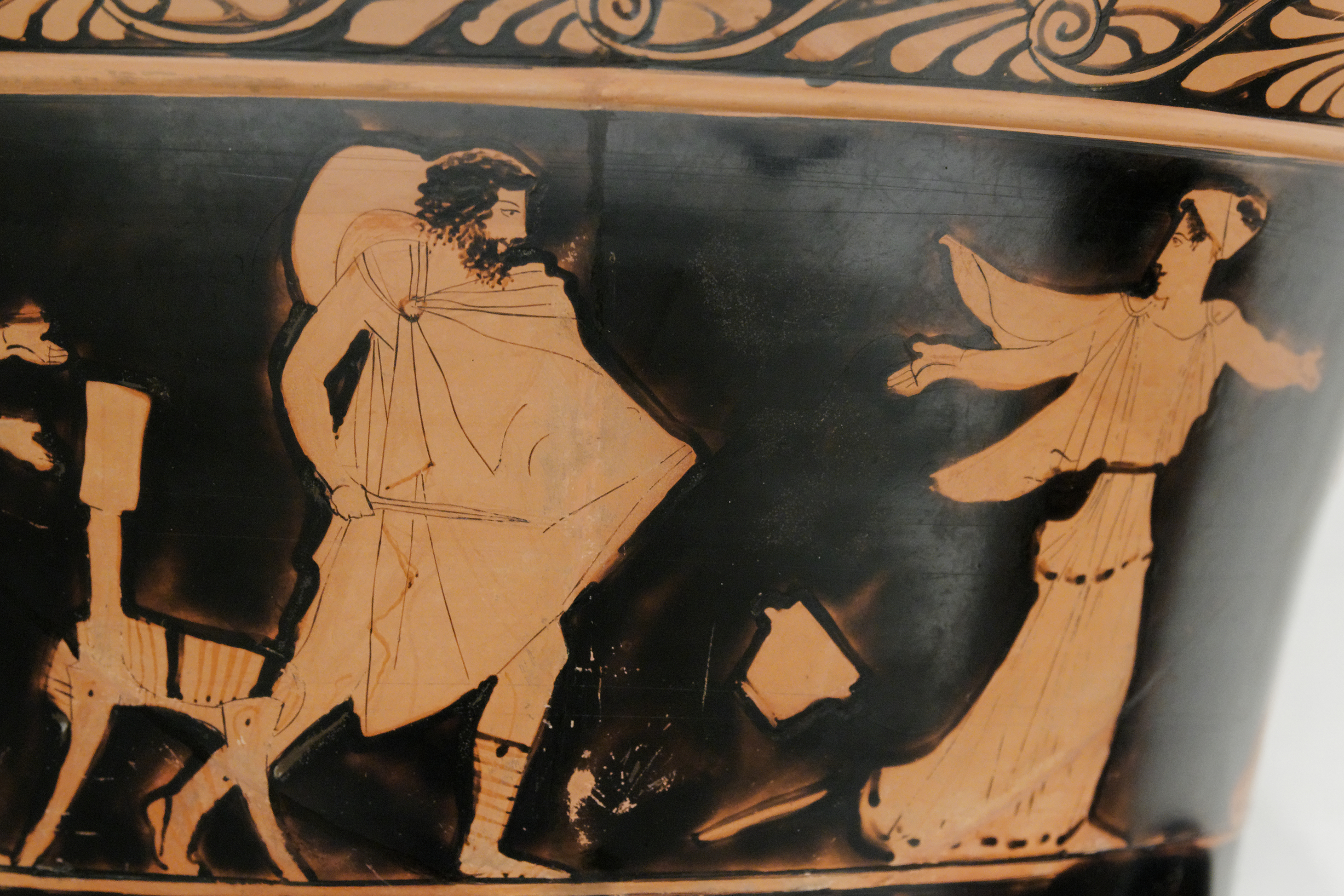One day there was an old man sitting by a campfire, with his donkey. As he properly seasoned his supper, he noticed that his tooth had a terrible ache. He tried everything to cure the ache. He attempted pulling the tooth out with his hand. Then he tied a string to it and his donkey, hoping the donkey could pull it out. Not even the strength of the donkey could make the tooth budge. Eventually he gave up and sat to eat his supper that was warming over the fire.
When he put a spoonful into his mouth, it scalded his tongue, which caused him to spit the hot liquid onto the grass nearby.
There was a butterfly in the grass that was sprayed by the liquid, causing it to fly away from its resting place.
The butterfly flew off eventually encountering the Indian hero, Kut O Yis, who was practicing his archery skills. The presence of the butterfly caused Kut O Yis to overshoot his target by a few inches.
The arrow flew off in the distance and struck a horse in the rear. At the surprise of the arrow, the horse bucked, whinnied, and neighed.
Eventually, all of the noise coming from the horse awoke its owner who was startled by the horse's reaction. Wondering what had happened, he grabbed his revolver out of its sling and let loose a couple of warning shots.
The old man's donkey was scared by the warning shots from the horse's owner, which made it kick out its hind legs.
As the donkey kicked out its hind legs, it accidentally hit the spice can by the fire pit. The can was propelled back into the old man's face.
The spice can released a cloud of dust, which hit the old man in the face. After sniffing in the spices, the old man's nose was tickled quite a bit.
With a tickled nose, the old man realized that he needed to sneeze. So he turned back to his left and reared his head back to sneeze. He wasn't polite when it came to sneezing, so as he lurched his head forward to let out the force of his sneeze, his mouth met the boulder of which he was unaware.
The connection between the rock and his teeth caused the aching tooth to be knocked straight from his mouth. In shock and a bit of pain, the old man felt around in his mouth and realized the aching was gone.
To this day, the old man hasn't had a toothache.
This is all thanks to the supper that scalded the old man's mouth.
Causing him to spit on the butterfly.
That flew away and distracted Kut O Yis.
Who missed his target with his arrow.
That ended up in the hindquarters of a horse.
Which woke the horse's owner.
Who fired off his gun.
Leading to the old man's donkey being startled.
That kicked the spice can over.
Causing the old man to sneeze.
Right into a boulder that knocked his aching tooth out.
Author's Note: I was inspired to attempt this story style after looking through the different types Dr. Gibbs gave to us. I combined the technique from the accumulative stories with some of the characters in the Blackfoot stories. In the accumulative stories, there are two styles that I built off of. I used the story, "This is the House that Jack Built" to help create a conclusion to my overall story, and I kind of followed the old woman's tale for the rest of the story. Instead of creating my own characters, I used my reading from last week (Blackfoot Stories), and implemented a few characters from those stories. The old man was a popular supernatural character in the Blackfoot tales, so I wanted to make him my main character. Kut O Yis is a hero from the stories who uses a bow. I thought it would be funny to have him be in the background as part of the sequence of events. The butterfly was a symbol for the "butterfly effect," which was how the story's plot unfolded. Truthfully, most of the other things I included in the story were added in to complement the characters I had already used. I just tried to match what I thought would be appropriate for the time frame of the stories.
Bibliography: Accumulative Stories in The Nursery Rhyme Book edited by Andrew Lang
Blackfoot Stories by Grinnell




.jpg)









._Washington_and_His_Times%2C_Washington_with_His_Soldiers_-_Washington_the_Soldier_(1930)%2C_Paris.jpg)








.jpg)












